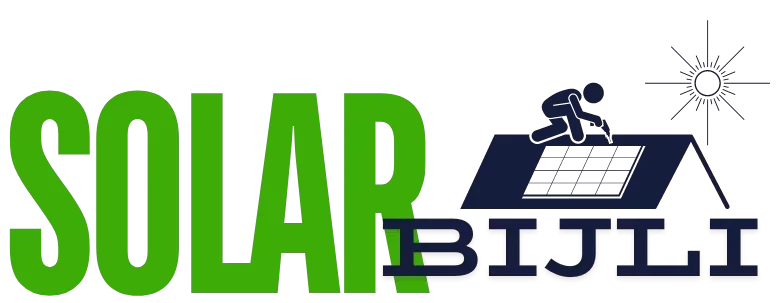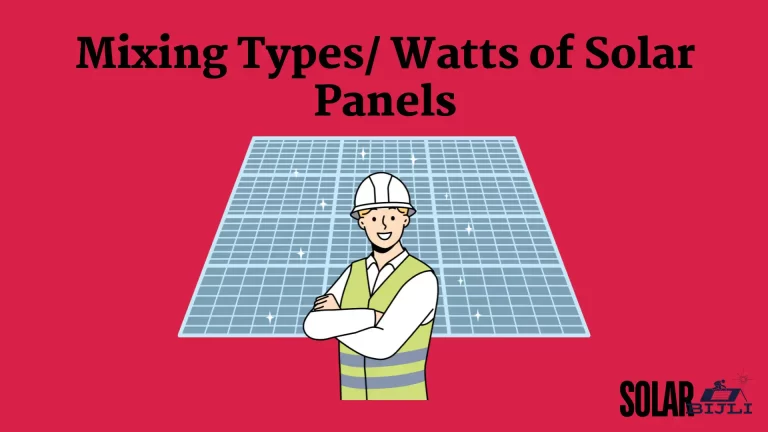Yes, the hybrid solar inverters can work without batteries. Many a clients of mine come to me with same question and ask what are the pros and cons of this.
People who wish to install hybrid inverters without batteries have one concern. They want to use sun energy during day and any excess electricity that their system produce needs to go to grid via green meters.
Secondly, during electricity load shedding at day-time they do not want that their inverters to shut off as in case of grid tied inverters.
If you plan to install a hybrid solar inverter and don’t have the money to install the battery bank then you will face following issues.
- You will not have a backup.
- On a cloudy day, if you don’t have electricity and there isn’t enough sun energy then your hybrid inverter will shut off.
- The auto reboot feature of solar inverter will reboot the inverter and it will again shut off since the excess energy cannot be obtained from sun or batteries.
- The life of your inverter can be at stake due to frequent reboots.
- If you live in an area where there isn’t the issue of load shedding then you can go for this arrangement.
Understanding the Concept of Solar Inverters
The solar energy produced by solar plates, by absorbing the sun’s radiation is DC (Direct Current).
However, since the grid and most of the appliances in our homes operate on AC (Alternating Current) which primarily means that the DC electricity needs to be converted for further use.
That’s where the solar inverter steps in. A solar Inverter serves this crucial function of converting DC to AC with appropriate voltage, frequency, and phase. This conversion is vital as it’ll power appliances in our home and feed the excess to the grid.
Types of Solar Inverters based on Application:
Solar inverter plays a vital role in the efficient working of solar power systems by maximizing energy efficiency and output. Based on application, solar Inverters are broken down into three types available in the Pakistani market which are the On-Grid, Off-Grid, and Hybrid Inverters.
On-Grid Inverter
The on-Grid Inverter also called the Grid-tied Inverter is used to convert Direct Current to Alternating Current for providing it to the electrical grid at the same voltage and frequency of that grid.
Off-Grid Inverter
Off-grid Inverter, also known as a standalone inverter works in a way opposite to the On-Grid Inverter. As the name represents, an Off-Grid Inverter is not linked to the grid and stores energy produced by Solar panels and feeds it to the battery bank for further use to drive appliances.
Hybrid Inverter
Hybrid solar inverter combines both functions of On-grid inverters and Off-grid inverters at the same time. Its flexible and versatile design manages power from solar panels, batteries, and the main grid at the same time.
Hybrid Inverter Working Principle
A Hybrid Inverter or multi-mode inverter is an inverter that combines a solar inverter and a battery inverter into a single unit. It performs the same work of converting DC to AC by combining the qualities of both the On-Grid and Off-Grid inverter. Hybrid Inverter can store excess energy into the batteries for further use. It can also retrieve energy from the grid to charge your batteries in case of insufficient energy supply from the panels.
If there is a power failure, the system can open a relay to isolate your system from the grid, and between the battery bank and the solar panels, it will act like an off-grid system until grid power comes back on. A properly sized hybrid system with storage can work great and give you peace of mind during bad weather.
Benefits of Hybrid Solar Inverter:
Power Reliability:
In case of energy blackouts, ordinary inverters do not always ensure or guarantee power supply. Even if your system has an On-Grid inverter, it will still cut off energy supply from your panels for safety purposes.
This is not the case for Hybrid Inverters. With both the combined capabilities of on-grid and off-grid inverters, it allows you to have power access even during blackouts
Two-way Power Conversion:
A hybrid inverter can convert AC to DC like all inverters. It can also convert DC to AC too. The bidirectional conversion capability is a standout ability of the hybrid inverters.
Battery Storage:
Installing a complete solar power system can be expensive, especially if you are thinking of adding batteries.
However, a hybrid inverter is built to easily add batteries whenever you want. This means you don’t need to pay for batteries right away. You can use hybrid inverters without a battery. It means that you can add batteries anytime which reduces the cost. The maintenance also becomes easy.
Power Regulation:
The amount of solar energy produced depends upon the intensity of sunlight. Sunlight changes continuously throughout the day depending upon weather and time. A hybrid inverter manages the power consumption to keep the system running smoothly and efficiently.
Operating Hybrid Inverters without Batteries:
A hybrid inverter can work perfectly fine without batteries. In case of no batteries, the hybrid inverter generates and supplies power from the solar panels as well as the utility grid. The solar panels do not need to provide all the power to run the household appliances. This is because some energy can be used from the grid as well.
A hybrid inverter without a battery can not provide power during a blackout and load-shedding. Hybrid inverters equipped with batteries utilize the excess power generated by solar panels and provide you backup when required.
Advantages of installing Solar Hybrid Inverter without Battery Backup
Disadvantages of installing Solar Hybrid Inverter without Battery Backup
How long will an Inverter last without a Battery?
If battery bank is not present, the hybrid invertor can still work as a stand alone solar invertor. In absence of battery it will DC power to AC and feed your homes. Additionally the excess power generated by hybrid invertor can be exported to main grid using net metering in Pakistan.
The non availability of battery bank describes that excess power generation will not be stored and no back up will be available during load shedding and night time. In this system solar power generation will be only available during day time.
Conclusion
Hybrid inverters can operate without batteries, by utilizing solar panels and the grid to meet power requirements. The setup is cost effective for many users as it provides advantage of grid interaction benefits but with a limitation of no back up at night. Users must consider their requirements and limiataions before deciding whether to include batteries in their solar power systems. By knowing these details, users can validate their load requirements, cost, performance reliabilty and solar setup.






